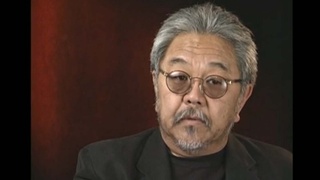Interviews
Working at the magazine
When I first came to Japan, I was just an American living in Japan. And working at that Buddhist magazine was interesting because they had some very important teachers in there. This was an old, kind of an elite society of scholars and it’s very old-fashioned. Of course I know nothing about this and quite often, my behavior was completely out of line with what they expect. And so that was part of my difficulty working at that magazine. They expected me to be an old Japanese gentleman, which I am not. Or I was not at that time. This was the problem, was that I didn’t know how to behave correctly as a Japanese. And so as I was watching my kids grow up, I learned a lot of things from them about how to speak properly and how to behave and how to be more nice. So thanks to my kids, I am more cooperative now than I was 3 years ago! It’s just like clothes. You have to change your clothes. You can’t wear the same kind of clothes for 30 years. You have to wear new clothes.
Date: November 13, 2003
Location: Kyoto, Japan
Interviewer: Art Nomura
Contributed by: Art Nomura, Finding Home.
Explore More Videos

Impression of Japan upon arrival
(b.1935) American born Japanese. Retired businessman.

Lack of language skills
(b.1964) California-born business woman in Japan. A successor of her late grandmother, who started a beauty business in Japan.

Having patience in Japan, being both
(b.1964) California-born business woman in Japan. A successor of her late grandmother, who started a beauty business in Japan.

Acculturation
(b.1964) California-born business woman in Japan. A successor of her late grandmother, who started a beauty business in Japan.

Preserving traditional Japanese culture
(b.1964) California-born business woman in Japan. A successor of her late grandmother, who started a beauty business in Japan.

New Year's food
(b.1964) California-born business woman in Japan. A successor of her late grandmother, who started a beauty business in Japan.

Japanese are more accustomed to foreigners
(b.1964) California-born business woman in Japan. A successor of her late grandmother, who started a beauty business in Japan.

His parents' experience with Japanese resistance toward intermarriage with Okinawans
(b.1925) Nisei of Okinawan descent. Had a 38-year career in Japan as a baseball player, coach, scout, and manager.

The privations of living in post-war Japan, 1952
(b.1925) Nisei of Okinawan descent. Had a 38-year career in Japan as a baseball player, coach, scout, and manager.

Kibei schoolchildren in Hiroshima, Japan
(b.1913) Kibei from California who served in the MIS with Merrill’s Marauders during WWII.

The reason he came to the United States (Japanese)
(1949 - 2019) Taiko player. Founded five taiko groups in Southern California

Grandfather's arrival in the U.S., experiencing discrimination
(b. 1939) Japanese American painter, printmaker & professor

Have compassion for all of humanity
(b. 1923) Nisei from Washington. Resisted draft during WWII.

Mother's immigration to U.S. as a treaty merchant
(b. 1927) Japanese American Nisei. Family voluntarily returned to Japan during WWII.

Why her parents came to Canada
(1918-2004) Interned in Slocan during World War II. Active member of the Japanese Canadian community.
